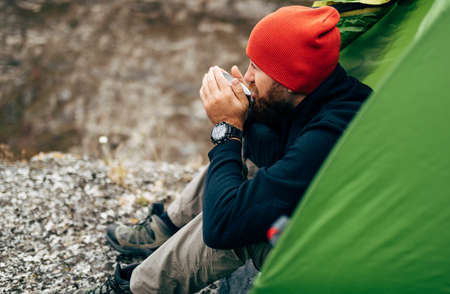Choosing the Right Camp Cooking Gear
When it comes to packing your camp cooking gear for maximum efficiency and safety, it all starts with choosing the right equipment. Your gear should be lightweight, durable, and reliable—qualities that are essential for any outdoor adventure. Consider what kind of camping trip youre planning: Are you backpacking deep into the wilderness, car camping at a local state park, or setting up base camp for a multi-day trek? Each scenario calls for a different approach. For backpackers, compact stoves, nesting cookware, and minimal utensils help keep your pack light without sacrificing functionality. Car campers can afford heavier items like cast iron skillets or larger propane stoves. No matter your style, always prioritize essentials like a stove or fire source, fuel, pots or pans, eating utensils, and cleaning supplies. Look for gear made from materials like stainless steel or anodized aluminum—they’re tough enough to handle rough terrain and repeated use. And don’t forget about safety: choose items with secure handles, stable bases, and heat-resistant components to prevent accidents around the campfire. By carefully selecting each piece of your cooking kit, you’ll ensure every meal in the wild is safe, satisfying, and hassle-free.
2. Organizing Your Cooking Kit
When it comes to camp cooking, a well-organized kit is your best friend in the wild. Smart organization not only saves precious pack space but also streamlines your setup and breakdown at camp, letting you focus on what matters: good eats and good times. Here’s how to dial in your system with practical, field-tested strategies for sorting, categorizing, and storing every piece of gear.
Sort by Function for Fast Access
Group your gear by primary use—cooking, eating, cleaning, and fire-making. This method makes it easy to grab exactly what you need without rummaging through your whole pack. Use stuff sacks or zippered pouches (color-coded if possible) to keep categories separate and quickly identifiable.
Sample Camp Kitchen Organization Table
| Category | Essential Items | Packing Tip |
|---|---|---|
| Cooking | Stove, fuel, lighter/matches, pots/pans, spatula | Nest pots/pans; store stove/fuel in a hard case to avoid leaks |
| Eating | Bowl, mug, utensils, cutting board | Use a mesh bag for drying; stack inside each other to save space |
| Cleaning | Sponge, soap (biodegradable), towel, trash bags | Store in a sealable pouch to prevent wet messes; pack out all trash |
| Fire-Making | Waterproof matches, firestarter, small tinder bundle | Keep separate from liquids; waterproof container recommended |
Categorize for Safety and Cleanliness
Always separate food-related items from fuel and chemicals. Cross-contamination is a real risk outdoors—keep anything that touches food well away from stoves and fuel canisters. If you’re packing raw ingredients, double-bag them or use leak-proof containers.
Packing Order Matters
Pack heavier items low and close to your back in your backpack or camp box. Place frequently used items like utensils and matches near the top or in external pockets so you don’t have to dig deep every meal. Reserve a quick-access pocket for first aid and emergency fire-making gear—just in case things go sideways.
Pro Tip: Modular Packing Wins Every Time
The best outdoor chefs use modular systems—a set of small bags or boxes that fit together snugly. Not only does this save space, but it also keeps your kit organized when setting up or breaking down camp in rough weather or fading light. Once you get into this habit, youll never go back to tossing everything loose in a tote again.
![]()
Packing for Safety and Cleanliness
When you’re gearing up for a camping trip, keeping your cooking equipment safe and clean isn’t just about comfort—it’s about survival. Smart packing helps prevent cross-contamination, reduces fire risks, and keeps your food protected from curious critters and unpredictable weather.
Prevent Cross-Contamination Like a Pro
Always keep raw meats and ready-to-eat foods in separate containers—think heavy-duty freezer bags or color-coded storage boxes. Stash your cutting boards, knives, and utensils for meats in a separate pouch or dry bag to avoid accidental contact. Bring extra disposable gloves or dedicate one multi-tool for meat prep only. Don’t forget to pack biodegradable soap and sponges for quick cleanups at camp.
Fire-Safe Packing Essentials
Only pack approved fire-starting gear—like waterproof matches in a sealed container, a sturdy lighter, or a magnesium fire starter. Store fuel canisters upright in a hard-sided box away from direct sunlight and heat sources. Keep your stove and fuel away from food supplies to avoid accidental spills or leaks. Always toss in a small fire blanket or collapsible bucket for emergency situations.
Protect Your Food From Wildlife and Weather
Nothing ruins dinner like waking up to find raccoons raided your cooler. Use bear-proof containers or odor-proof bags for all food items. Hang food packs at least 10 feet off the ground and 4 feet away from tree trunks when camping in bear country. For smaller critters, stash snacks in hard plastic bins with tight lids. Always store food away from your tent and never leave scraps behind—pack out what you pack in.
Bonus: Weather-Proof Your Supplies
Seal everything in waterproof dry bags or heavy-duty totes to guard against rain or morning dew. Keep a couple of silica gel packets or moisture absorbers with your gear to fend off rust and mold. A little extra prep means you’ll be ready to cook up a hot meal no matter what Mother Nature throws your way.
4. Optimizing Your Camp Kitchen Workflow
Getting your camp kitchen dialed in isn’t just about what you pack—it’s about how you use it once you’re out there. An efficient setup can mean the difference between a smooth, enjoyable meal and a chaotic mess that attracts every raccoon in the zip code. Here’s how to set up your outdoor kitchen so you can cook, clean, and store like a seasoned backcountry chef.
Designate Zones for Maximum Efficiency
Divide your cooking area into clear zones to streamline your workflow and minimize cross-contamination:
| Zone | Purpose | What Goes Here |
|---|---|---|
| Cooking Zone | Main area for food prep & cooking | Stove, fuel, pots, pans, utensils, hot pads |
| Cleaning Zone | Where you handle dishwashing & food waste | Wash bins, biodegradable soap, scrubbers, drying rack, trash bags |
| Storage Zone | Keeps food & gear organized and critter-safe | Cooler/food bins, bear canister (if needed), dry goods tote, sealed containers |
Smart Layout Tips for Your Camp Kitchen
- Keep zones separated: Place at least 10 feet between cooking and cleaning zones to avoid splashes and clutter.
- Face the wind: Set up your stove so prevailing winds won’t blow out your flame but will vent smoke away from your tent.
- Level ground only: Find flat ground for the cooking zone to prevent pots from tipping over—safety first.
- Lighting counts: Use headlamps or lanterns above your kitchen area for after-dark meals and cleanup.
Create an Easy Restocking System
Avoid the frustration of missing essentials by keeping your kitchen kit organized both on the road and at camp:
- Packing cubes or clear bins: Use color-coded bags or clear totes to separate utensils, cookware, cleaning supplies, and pantry items.
- Campsite checklist: Tape a laminated checklist inside your storage bin lid so you can track what needs refilling after every trip.
- First-in-first-out rule: Rotate food items so nothing expires at the bottom of your cooler or tote.
Pro Tip: Stay Bear-Safe!
If youre camping in bear country, always store all scented items—food, trash, even toothpaste—in approved bear containers or hang them high and away from your sleeping area. Never leave food unattended on picnic tables or in tents overnight.
Summary Table: Camp Kitchen Workflow Essentials
| Task | Your Solution |
|---|---|
| Food Prep & Cooking | Campsite stove + all utensils in one bin in Cooking Zone |
| Cleansing Dishes & Gear | Basin with soap & water in Cleaning Zone—10ft from Cooking Zone |
| Food Storage & Safety | Airtight containers/cooler in Storage Zone; bear-proof if required |
This streamlined system keeps your camp running smooth and safe—so you spend less time hunting for gear and more time enjoying fireside chow.
5. Post-Trip Cleaning and Gear Storage
After a successful camping adventure, taking care of your camp cooking gear is just as important as how you packed it. Proper cleaning and storage not only extend the life of your equipment but also make sure you’re ready for the next outdoor mission at a moment’s notice. Follow these best practices to keep your gear adventure-ready and in top shape.
Clean Everything Thoroughly
Once youre back home, don’t procrastinate—unpack all your kitchen gear right away. Wash pots, pans, utensils, and stoves using hot water and biodegradable soap. Pay extra attention to removing food residue that can attract critters or cause corrosion. For stubborn grime, use a non-abrasive scrubber. Let everything air dry completely before storing to prevent mold and rust.
Inspect for Damage
Before packing things away, check every piece for wear and tear. Look for cracks in plastic handles, dents in cookware, or nicks in blades. Replace damaged items or repair them if possible—nothing ruins a trip like discovering busted gear at the trailhead.
Organize by Function
Group similar items together so next time you pack, you’re not hunting down missing pieces. Store your stove with its fuel bottle (empty and aired out), nest cookware sets together, and keep utensils in a dedicated pouch or container. Label bins or stuff sacks if needed—organization is key for quick deployment on your next outing.
Store in a Dry, Accessible Place
Avoid tossing your cleaned gear into a damp basement or crammed garage corner. Instead, stash it in a cool, dry area where airflow prevents moisture buildup. If possible, hang pots and pans or use shelving to keep them off the ground. Keep your packed kitchen kit easily accessible so spontaneous adventures are always within reach.
By following these post-trip routines, you’ll keep your camp cooking setup dialed-in for efficiency and safety—ready to help you conquer whatever wild places call you next.


